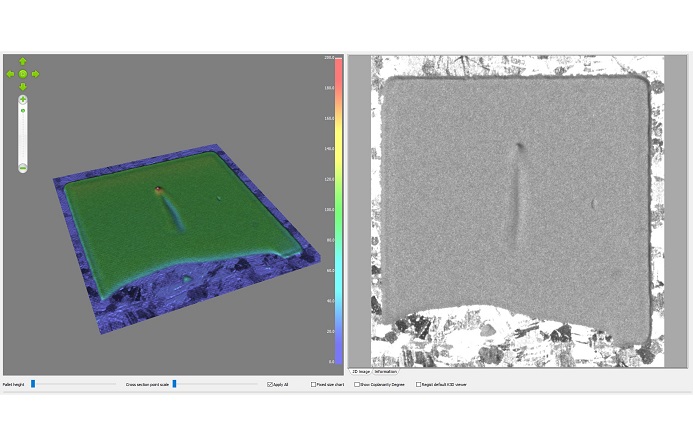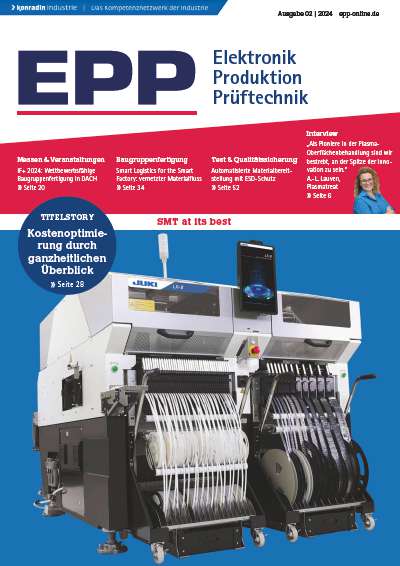The vision from Bill Gates that “… 256 Kbytes of memory is more than enough for anyone“, has eventually rendered futile. Now, even inexpensive PCs come standard with 64 or 128 Mbytes. As a result of the trend for more and more memory in consumer products (requiring longer programming times), production-programming strategies must take this factor into account. Programming has become a key issue which effects the efficiency andeconomics of board assembly.
Greg Francois, Director of Marketing,Data I/O, Redmond, WA
Virtually all electronics-based consumer products contain some amount of memory. For example, the majority of today’s cellular phones contain 8 Mbit of flash memory, and within a few months, we expect 16 and 32 Mbit as standard. (64 Mbit and beyond is looming in the near future).
Typically, the majority of programmable devices fall into three areas: memory, programmable logic, and programmable micro-controllers. Memory, which is predominantly flash-based technology, is by far the highest volume-programmable device type. In addition, the price of flash-based components has now reached a price point where there is no longer a clear economic advantage in the so-called masked devices. (In semiconductor manufacturing the program can be physically implemented into a device via a set of masks used in photolithography and etching steps). Together with market requirements, which are trending towards more product customization and personalization via last-minute code updates, they make a programmable component the device of choice.
More programmable devices (in different and smaller packages) appeared on the market at reduced prices. The emergence of (eBGA packaging, plus larger flash memory sizes, have allowed manufacturers to add features which would have taken too much memory in the past, increasing the product size and cost. Added features for wireless communication and digital storage products are the main drivers in the tremendous growth rates for flash memories. In 2000, sales of flash memory is approximately $10bn, double that of 1999. The automotive industry is another example of the increased use of programmable devices. Some cars contain 30, 40 and up to 50 or more programmable micro-controllers. The same market forces are also driving this field of application.
Today, a 16Mbit flash memory is packaged in a 48-ball (eBGA (ball grid array), measuring just 7 x 7mm. This compares with its DIP/DIL (dual in-line package) “grand-father” that in the early 1990’s came with just 512 Kbit of memory, and a size of 41 x 12mm. This equates to 32-times less memory at 10-times the PCB real estate required to mount the device. And like the rest of the memory technologies available today, the cost of a 16Mbit flash memory device is lessS expensive than that for the 512 Kbit device back in the early 1990’s.
The explosive growth in flash memory is primarily being fueled in the cellular phone and internet appliance (non-PC based devices) consumer markets. The number of cell phones being manufactured today is expected to increase to nearly 1B phones annually by 2003. The number of these products is expected to see rapid growth, and will exceed the number of PCs.
In-line programmingversus off-line
Programmable devices were primarily used in complex equipment which were manufactured in low volumes. As such, programming solutions in the past focused on the technology rather than the application, and covered a broad range of devices. The traditional programmer had a single socket into which the IC was placed and programmed. As the field of application grew, some OEMs required higher volumes of devices to be programmed, and thus emerged multiple socket programmers, and, by the late 1980s, fully automated handling and programming systems. The high-volume product lines in which large flash memories are used, have caused a demand for advanced programming solutions. The questions which need to be asked to determine the correct programming solution for an application include the following:
• What is the range of devices and package types?
• What are the volumes for each type of device?
• What is the mix of devices in a typical batch, and what is the batch size?
• What package types are being used, and how will they be identified in the programmed part?
• How frequently does the data programmed change?
• Is the data in every part the same (customization or not)?
• What are the production needs or constraints (floor space, resources, number of lines, factory capacity)?
• Mix of products within a factory?
• Production cycle time (beat rate, the time to assemble a single board)?
There is an especially inherent benefit in bringing programming in-line for higher volume applications. That is the elimination of single steps in the process (namely off-line programming) and lower yields associated with those additional process steps. In-line programming is simply integrating the programming into an existing manufacturing process step (such as during the delivery of a device from a feeder to a placement machine).
The in-line solution
Most high-volume applications that use a low mix of devices will gain immediate benefits when programming is brought in-line:
• Response to last-minute data changes and program parts just in time
• Lower risks associated with JIT programming versus large inventories of pre-programmed parts
• Lower costs in high-volume/low-mix applications
• Readily customized products (elements of the firmware data can be changed on the fly)
Cellular phone manufacturers were among the first to recognize these benefits, and began using their automated test equipment (ATE) to program the flash memories in-line and just in time. For many other high-volume assemblers with similar application profiles, this has provided a highly economical solution which has addressed their needs.
The production bottleneck
Unfortunately, as flash memory requirements have grown and capacity needs have increased, a bottleneck is being created by increased programming times during the ATE step at the end of the production line. Simply put, the assembler is being forced to increase factory capacity to meet the market demands. The two basic options are to install more production lines, or decrease the cycle time for each assembled unit, thereby increasing the effective capacity of the existing production lines. More manufacturers are opting to decrease cycle times. For example, in the cellular phone industry, it is required to reduce cycle times for factory output from 30s, down to 15s, with a goal of less than 10s.
In contrast to that goal, flash memories capacity has increased to an average of 8Mbit, with a trend towards 16/32Mbit (64Mbit are in the planning stage). The average programming time for a 16Mbit device is typically 40s (to more than 60s in some cases). With a cycle time requirement of just 10 or 15s, this instantly creates a bottleneck. When cycle time requirements are reduced to under 10s and the device sizes are 32 or 64Mbit, programming times will only make matters worse. The flash memory manufacturers have made great progress in reducing programming time, but the rapid growth in device capacity will not likely be addressed by programming time improvements.
The bottleneck can be removed by adding ATE, but at a significant cost, not only just in terms of capital equipment, but also in floor space. When comparing outsourcing (having the programmable devices programmed outside) to off-line and in-line programming solutions, it’s not simply a matter of comparing capital costs, but of balancing total production costs for an extended period as well (capital costs, consumables, floor space, resources, uptime, utilization, etc.). This is why it is important to examine programming solutions in terms of the specific application (in lieu of a generic methodology).
Flash programmingwith optimized system
Data I/O’s ProLINE-RoadRunner was developed to address these trends, specifically the bottlenecks associated with the programming of increasingly large flash memories in-line. The system contains all of the advantages of high-volume, in-line programming, but with an architecture and configuration that eliminates the current bottleneck, and has built-in excess capacity for increased memory sizes while maintaining shorter cycle times. The RoadRunner is a unique solution that allows programming without taking up any additional floor space. It mounts directly onto the feeder bank of a fine-pitch placement machine. The system is optimized for programming flash memories, and can program over 3-times faster than the fastest equipment currently available on the market, and over 10-times faster than average machines. Combined with a pick&place head, which holds four devices at a time on four nozzles, and a four socket programming system, the RoadRunner can program four 16Mbit devices in just 12s for example.
Combined with the delivery mechanism to the placer’s pick point, the system can deliver four programmed 16Mbit memories in under 30s, supporting a cycle time of 7s per assembly (assuming one flash memory each board). This makes the RoadRunner the premium performance programming solution available on the market, and allows high-volume manufacturer using flash memories programmed in-line, without a bottleneck.
Minimum downtime
The benefits of just-in-time programming, elimination of production bottlenecks and shorter cycle times can be neutralized by poor yields or production line downtime. An advantage of using ATE is that it is proven equipment in the production process. There always is an added risk when adding equipment due to potential downtime. This is why in the design and development of the RoadRunner, key goals were to bring programming in-line without increasing risk of downtime. This methodology utilizes the existing infrastructure in the production line, specifically the placement machine and process. Because the system houses directly on the placer, there are no required modifications to the production line and no additional floor space requirements.
The simple plug’n’play implementation is supported by a replace&repair off-line service strategy. This means that if the RoadRunner requires maintenance, it can then be quickly and easily replaced to minimize or eliminate any downtime. Even though the system has similar performance to a conventional off-line programming solution, it weighs only 15kg and is highly portable. The size of the ProLINE-RoadRunner is small enough that a second system can be installed alongside the first for continuous operation in the case of a failure. Additionally, this side-by-side scenario can be used to instantly double programming capacity in an existing line. This is a much more economical solution than adding off-line or ATE resources. This type of doubling may also be required when flash memories densities are so large and cycle times so short, that a single system cannot meet the required line cycle time.
Specification of ProLine RoadRunner
AC power input 100 to 240VAC, 50/60Hz, 100W
Operating temperature +15 to +40°C
Air requirements 70 to 90PSI (@ 4 SCFM)
Operating humidity 20 to 80% (non-condensing)
Length 990mm
Input tape width 24 and 32mm
Width 78.75mm MTTR (mean time to repair) 2 hrs
Height 560mm
MTBM (mean time between maintenance) 170hrs
Weight 15kg
TaskLink for Windows Job Input (via PCMCIA Card)
zusammenfassung
Der Bedarf an Halbleiterspeicherkapazität (FlashMemory) in modernen Geräten nimmt sprunghaft zu. Wegen der Gerätesteuerung und zur Realisierung weiterer Funktionen wird die implementierte Firmware stets umfangreicher. Das Problem ist die Eingabe der Programmdaten im Fertigungstakt. Die Integration des Produktionsprogrammers im Bestückungsautomaten verspricht handfeste Vorteile.
Résumé
Les besoins en capacité de mémoire des semi-conducteurs (flash memory) dans les appareils modernes ne cessent de croître. A cause de la commande des appareils et pour pouvoir réaliser d’autres fonctions, les microprogrammes implantés sont de plus en plus nombreux. Le problème réside surtout dans l’entrée des données de programmation la cadence de fabrication. L’intégration du programmeur de production dans les automates d’équipement de composants promet de nombreux avantages concrets.
Sommario
Il fabbisogno di capacità di memoria semiconduttore (Flash Memory) in moderni apparecchi aumenta tutto di un colpo. A causa del controllo dell‘apparecchio e per la realizzazione di altre funzioni il firmware implementato diventa sempre più complesso. Il problema è rappresentato dall‘inserimento dei dati di programma allo stesso ritmo della produzione. L‘integrazione del programmatore di produzione in apparecchi equipaggiatori promette grandi vantaggi.
Fax +49-89-85858-10
EPP 151
Unsere Webinar-Empfehlung
Applikationen aus dem Bereich der Leistungselektronik gewinnen immer mehr an Bedeutung. Die Inspektion dieser Applikation lässt sich mit der bewährten Standardtechnologie der 3D-Messtechnik bewerkstelligen.
Teilen:
















